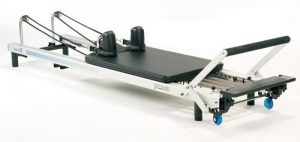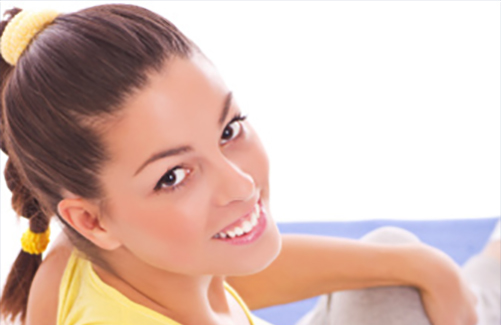Blog
What is STOTT Pilates?
STOTT PILATES is a contemporary version of the Pilates method of physical exercise. It was developed by Lindsay and Moira Merrithew, with the collaboration of physical therapists, and sports medicine and fitness professionals, to ensure the method stays up-to-date with current scientific and biomechanical research. The most significant difference between STOTT PILATES and Joseph Pilates’s original method of the early 1900s is that, where the original method uses a straight spine during exercise, STOTT PILATES focuses on maintaining the natural curvature of the spine.
STOTT PILATES is a sister brand of ZEN●GA™, CORE™ Athletic Conditioning and Performance Training™, and Total Barre™.

Early reformers were constructed out of wood, and Moira and Lindsay recognized that the original equipment designs of Joseph Pilates were not adjustable: the exerciser had to adjust to the machine, rather than the other way around. Early in the 1990s, Lindsay set about designing the company’s proprietary line of Pilates equipment, height-adjustable to suit individual users, to work in concert with the STOTT PILATES method.
The STOTT PILATES method has exercises designed to restore the natural curves of the spine and rebalance the muscles around the joints. The STOTT PILATES method places more emphasis on scapular stabilization than other methods. The method focuses on the following five basic principles:
• Breathing
• Pelvic placement
• Rib cage placement
• Scapular movement
• Head and cervical spine placement
Breathing
The breath pattern used in the STOTT PILATES method involves an expansion of the rib cage out to the sides and back without allowing the shoulders to lift. According to STOTT PILATES, it is also important to breathe into the lower part of the lungs, because there is more efficient gas exchange.
Pelvic placement
Pelvic placement emphasizes stabilization of the pelvis and lumbar spine (lower back) in either a neutral or an imprinted position. Neutral placement maintains the normal curve of the lower back: when lying on one’s back, the front of hip bones and pubic bone lie parallel to the mat, and the lower back is not to be pressed into the mat. While breathing and engaging abdominals in this position, no strain should be felt through the lower back. In an imprinted position, the lower back is moving toward the mat.
Ribcage placement
The rib cage position affects the alignment of the thoracic (upper) spine. When lying on the back in a neutral position, STOTT PILATES practitioners maintain the sense of the weight of the ribs resting gently on the mat (that is, they maintain the normal curve of the upper back). They don’t lift off or push the rib cage into the mat, paying particular attention to the placement of the rib cage when inhaling or while performing arm movements overhead.
Scapular movement
When using the STOTT PILATES method, stabilizing the scapulae (shoulder blades) on the back of the rib cage is as important as contracting the abdominals during the initiation of every exercise. This helps avoid strain through the neck and upper shoulders. To achieve proper placement, a sense of width is maintained across the front and back of the shoulders, making sure that the shoulders neither round forward too much nor squeeze together toward the spine; shoulders are not lifted too far, nor over-depressed. Placement is somewhere between these two positions.
Head and cervical spine placement
STOTT PILATES placement of the cervical spine (neck) is such that it holds its natural curve, with the head balanced directly above the shoulders when sitting, lying, and standing. In some cases, a small pillow is used when lying on the back, to put the head and neck in a comfortable position. Whenever exercisers lift the head and upper body from the mat, they lengthen the back of the neck and nod the head forward, without jamming the chin into the chest. This way, there is enough room to fit one’s fist between the chin and chest. Once the head is in proper position and the shoulder blades are stabilized (Principle 4), the upper torso can be lifted by contracting the abdominals and sliding the rib cage toward the pelvis.
More Articles

How To Stay Healthy In The Workplace
How much do you hate sitting in an office chair from Monday-Friday for 8+ hours a day and leaving the workplace feeling stiff and tired? I’ve been there and I know how terrible this feels. Which is why I...

Beat Back Pain with Better Breathing and Do Pilates
Do you suffer with back pain? Does it seem like you’ve tried a million different things to make the pain go away… From Doctor’s visits, to taking pain pills, a few trips to your favorite Chiropractor, perhaps a massage,...


 © Beyond Fit, LLC. All Rights Reserved.
© Beyond Fit, LLC. All Rights Reserved.